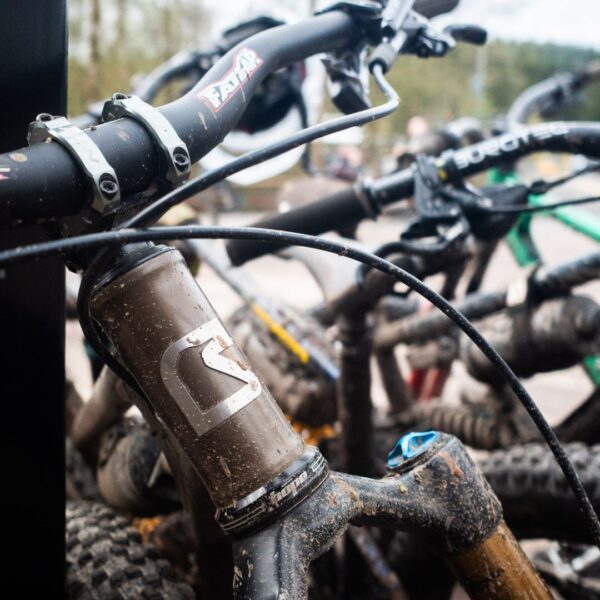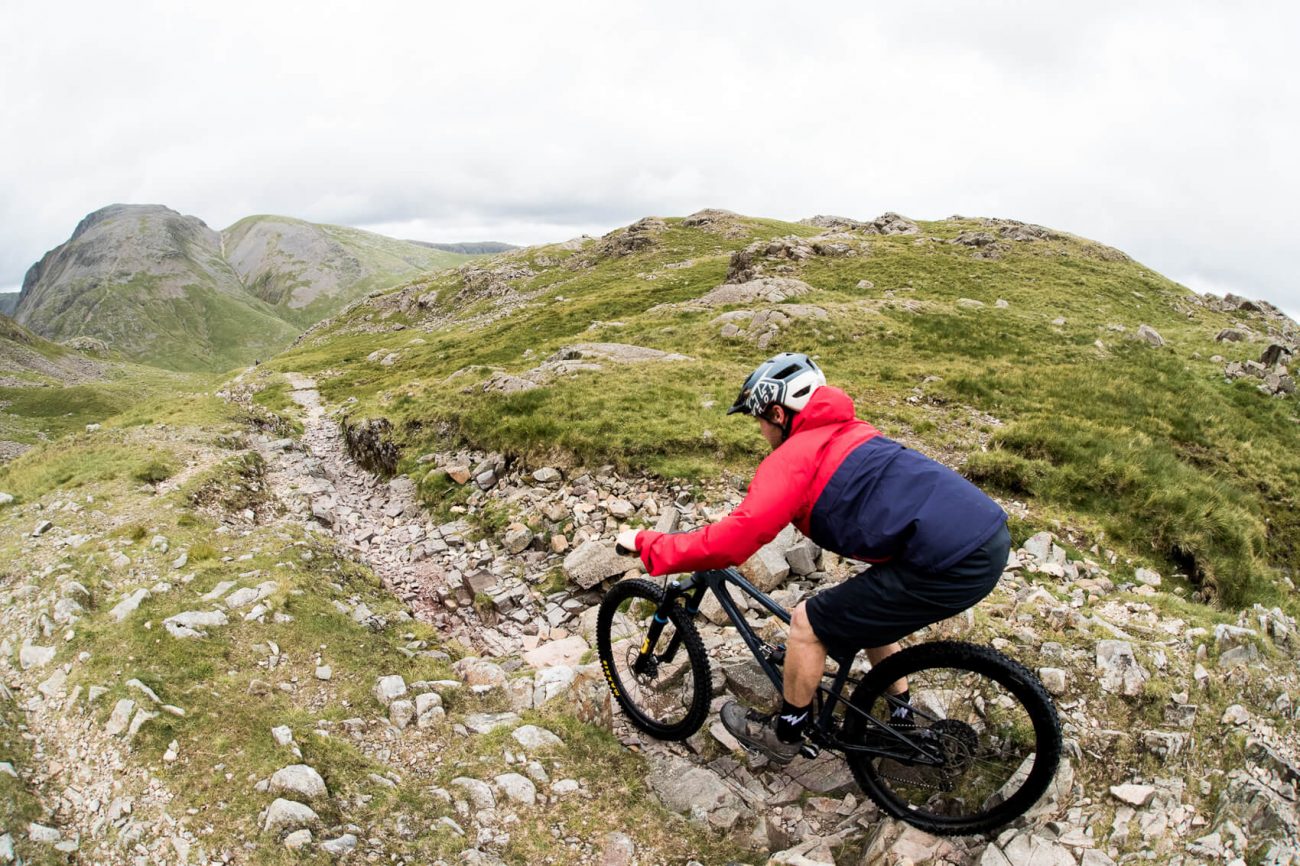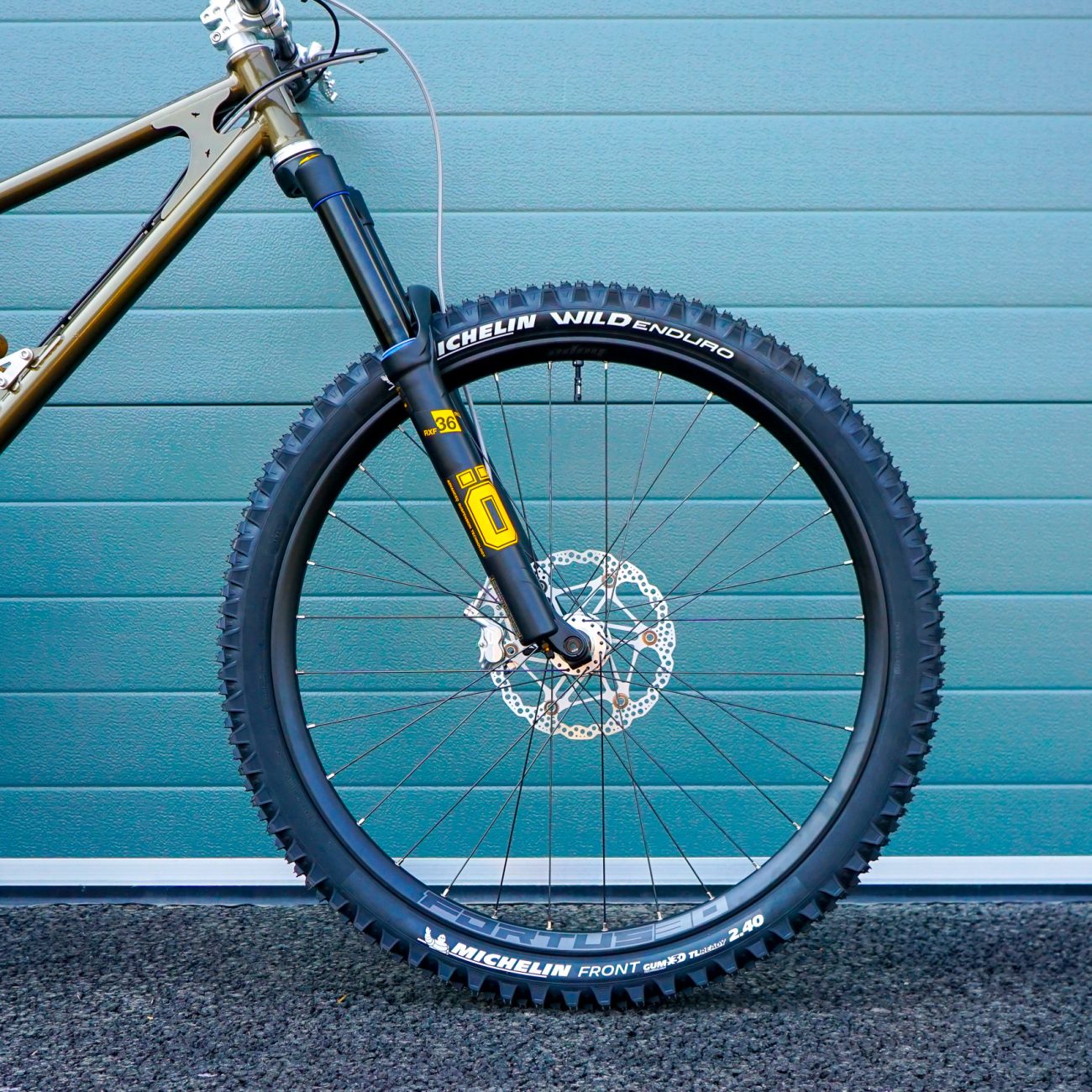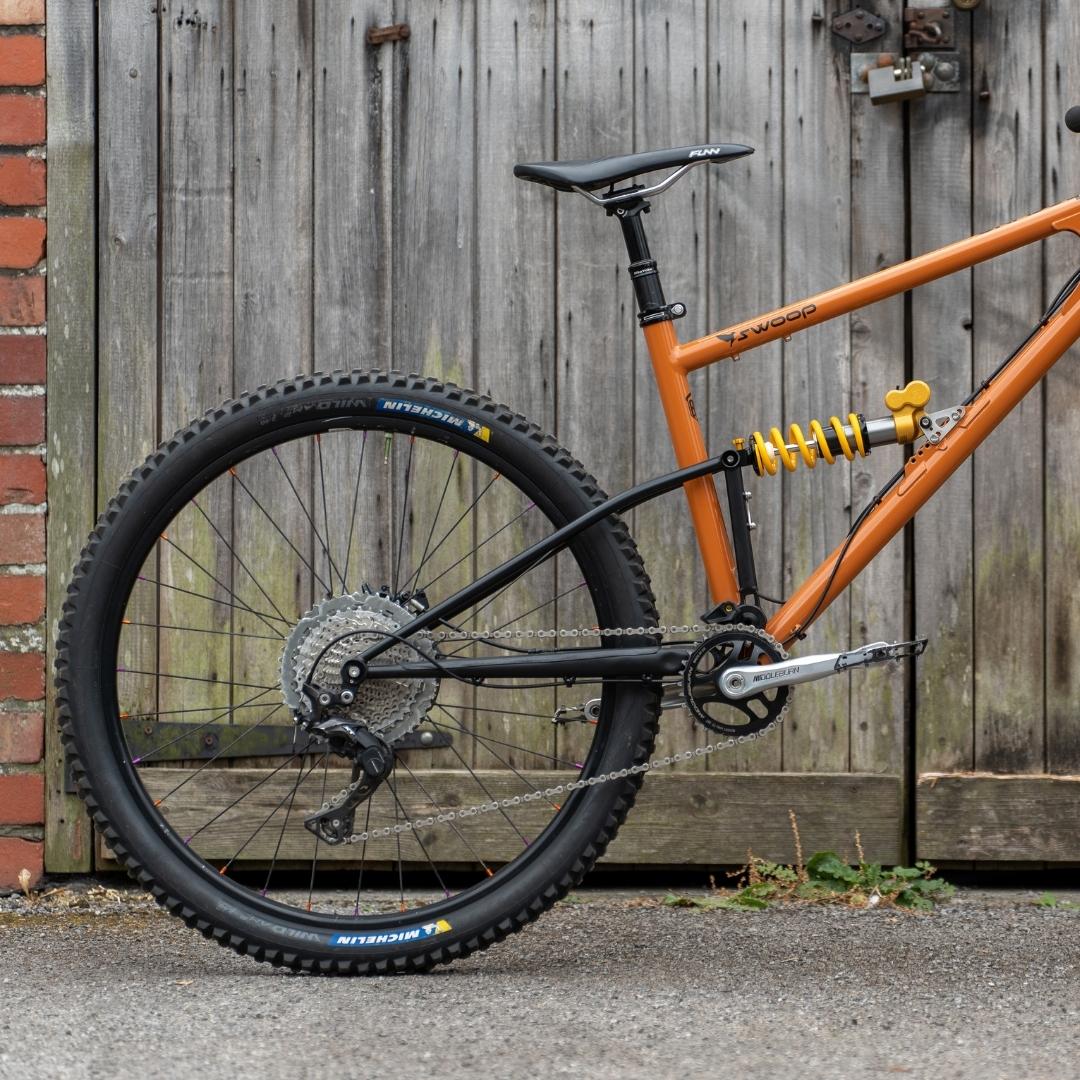

Mountain Bike wheel size has caused much debate over the years. Are 29″ mountain bike wheels better than 27.5″ wheels? Are larger mountain bike wheels better?
Let’s discuss the differences between 29″ and 27.5″ wheels. Take it away Joe:
Mountain bike wheel size and the difference between 27.5″ and 29″ wheels. Let’s break it down.
I’ll consider one parameter at a time. Tyre contact patch, rollover, dropping into holes, rotational energy, gyroscopic stability, relationship to BB drop.
Mountain Bike tyre contact patch. OK, let’s do the easiest one first. Bigger mountain bike wheels do not have a bigger contact patch. The contact patch is purely a function of the air pressure in your tyres. It is the air pressure that supports your weight. Force (your weight) = Tyre pressures x contact patch area. Simple.
Different-sized mountain bike wheels may have slightly different shaped contact patches, longer and thinner on bigger diameter wheels, but the area is the same. On a side note, the same is true of fatter tyres, a 2.2″ tyre with 20 psi has same contact patch as a 4″ tyre with 20psi. It’s just that the bigger volume allows you to run lower pressure without damaging your rims.
Mountain Bike ‘Rollover’. Do larger mountain bike wheels roll over bumps better? Well, no, not really. Realistically, I would consider a bump of 2” (50mm) in the realm of ‘rollover’. Anything much bigger and you need to start lifting the bike up and it’s not really rollover. If you consider where a 2” bump hits a wheel on both 29″ and 27.5″ wheels, you can see the difference in angle of attack is negligible, 1.14°.

Bigger mountain bike wheels don’t drop into holes as much. Also untrue. Sorry. Realistically, when the bike is moving forward at a speed any faster than a crawl, it’s unlikely you’ll touch both sides of a hole. The forward motion means you’ll hit the backside of the hole. In this case, wheel size then becomes irrelevant and we revert to the rollover case.
Rotational Energy. Do bigger mountain bike wheels carry more rotational energy? This is true, but only as a function of the difference in wheel weight. A bigger wheel is heavier by 29/27.5=5% (probably about 0.5% of bike plus rider system).
If this heavier wheel was spinning at the same speed as a smaller wheel, there would be more angular momentum, but larger mountain bike wheels spin slower.
Think of the amount of ground the circumference of the wheel covers in one rotation. It is proportionally less for a bigger wheel, so it spins slower. This affects acceleration too; other than the tiny bit of extra weight it requires no extra energy to accelerate bigger wheels.

Gyroscopic stability and mountain bike wheels. OK, this is the important one. Although there’s no change in angular momentum, there is an impact on the gyroscopic stability of the larger mountain bike wheels. This is because it is proportional to the diameter squared. The gyroscopic stability is the tendency for your wheel to stay ‘in-plane’ when rotating. Like the child’s toy, which stays upright when spinning, it doesn’t want to lean over. Take your front wheel out of the bike and spin it up to speed holding it at the axle. Feel the forces to try and move the wheel out of plane.
Now imagine riding along on your bike and trying to lean it over, bigger wheels will make it harder to lean. But also, it means the bigger wheel will not be knocked offline as much by bumps. Anyone who has moved from smaller wheels to big 29″ wheels will have felt this effect. The big-wheeled mountain bike is harder to lean over, you need to put more effort in. But once it’s leant over, it’s more stable. People who are capable, will be able to tell you a 29″ is harder to whip off a jump.
Relationship to BB drop. The offset from the wheel axles and the bottom bracket is called the BB drop. For bigger wheels, to maintain a similar BB height from the ground, the drop is more. This drop in relation to the gyroscopic forces acting in the wheels will affect how the bike rides. To be honest, I’m yet to fully understand this topic and have plans to partner up with a final year Engineering student to try and understand this effect.
So, what does this mean for mountain bike design?
The Murmur 29″ bike will track and carry speed better (due to gyroscopic stability not rollover). The Swoop 27.5″ bike will be more manoeuvrable, allowing you to hop and pop between line choices. The Twist mullet bike, aims to give the stability on the steering front wheel, and manoeuvrability on the rear wheel. But, it’s not the golden ticket, rather a mid-point between the other bikes.
Ex-aerospace engineer Joe Mcewan is the founder and chief engineer of Starling Cycles. Passionate, outspoken and fond of a cuppa and a debate, Joe loves to challenge the established thinking of the industry.